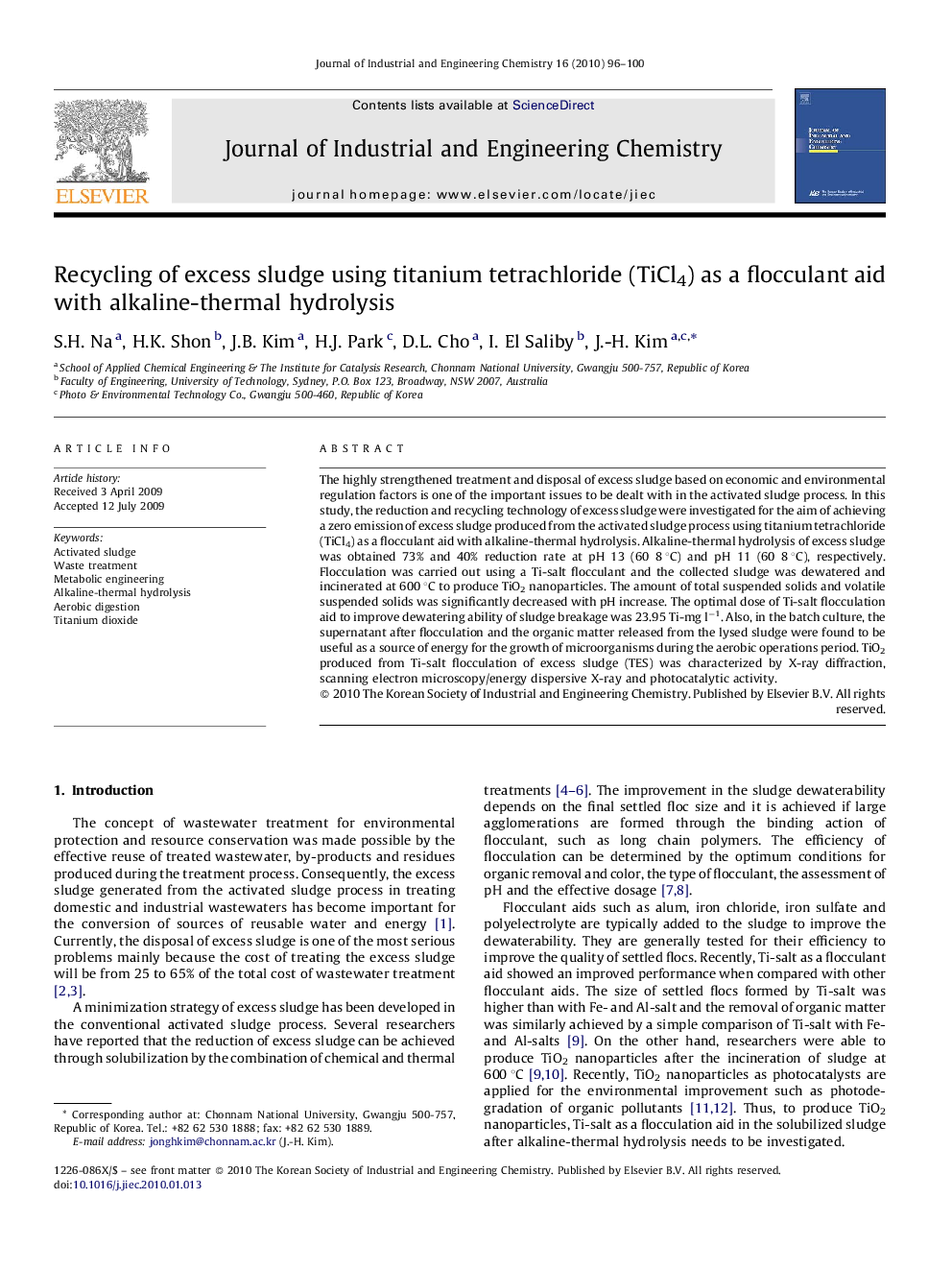| Article ID | Journal | Published Year | Pages | File Type |
|---|---|---|---|---|
| 228878 | Journal of Industrial and Engineering Chemistry | 2010 | 5 Pages |
The highly strengthened treatment and disposal of excess sludge based on economic and environmental regulation factors is one of the important issues to be dealt with in the activated sludge process. In this study, the reduction and recycling technology of excess sludge were investigated for the aim of achieving a zero emission of excess sludge produced from the activated sludge process using titanium tetrachloride (TiCl4) as a flocculant aid with alkaline-thermal hydrolysis. Alkaline-thermal hydrolysis of excess sludge was obtained 73% and 40% reduction rate at pH 13 (60 8 °C) and pH 11 (60 8 °C), respectively. Flocculation was carried out using a Ti-salt flocculant and the collected sludge was dewatered and incinerated at 600 °C to produce TiO2 nanoparticles. The amount of total suspended solids and volatile suspended solids was significantly decreased with pH increase. The optimal dose of Ti-salt flocculation aid to improve dewatering ability of sludge breakage was 23.95 Ti-mg l−1. Also, in the batch culture, the supernatant after flocculation and the organic matter released from the lysed sludge were found to be useful as a source of energy for the growth of microorganisms during the aerobic operations period. TiO2 produced from Ti-salt flocculation of excess sludge (TES) was characterized by X-ray diffraction, scanning electron microscopy/energy dispersive X-ray and photocatalytic activity.
